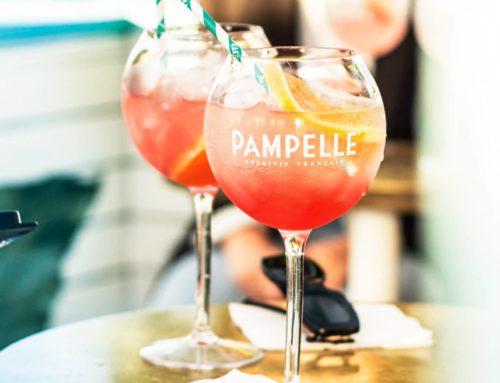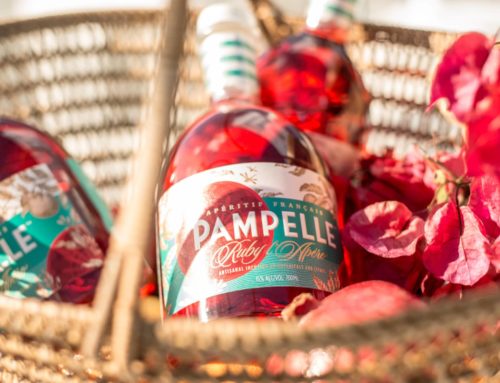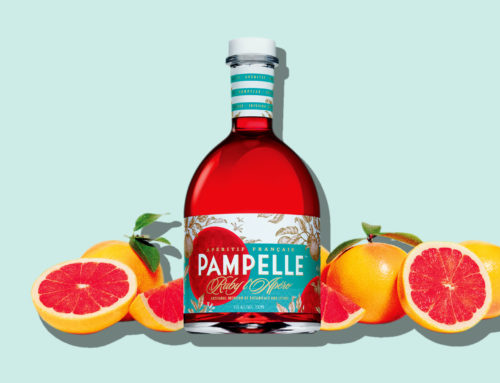Manuel Terron, one of the leading voices in Australian bartending, takes time out to review Pampelle and give his thoughts on best food pairings to, in his words, open up your world of culinary discovery!
It seems that food and drink have been an ideal pairing from very early on, almost since the beginning of time. Although I wasn’t personally there to see how this happened, it is plausible that our ancestors had to wash down their fodder with something.
In this day and age we have come to develop some delicious combinations like smoky whiskey and oysters or red wine and cheese. Very good options indeed. But what of the Aperitif category of beverages? A category of drinks that have been created to open up the appetite and in some cases, to be specifically enjoyed with food.
One of those aperitifs new to the scene is Pampelle, and if truth be told, it is one that really elevates the eating experience. As a product low in alcohol it allows for the flavours of food to exude and not become cloaked by the intensity of alcoholic heat. Also, the low sugar content means that it mixes easily and will not coat the mouth with sweetness. This is a key point to working well alongside savoury foods.
This is not to say anything on personal tastes. I’m sure there are people reading this that would enjoy a martini or “fruity’ cocktail with some nosh, but it really is more about the drink rather than the food in those instances. And what of beer, some of you may ponder… Well nothing really, but beer is just so filling by itself, let alone being paired with food. Personally, I like to stick to certain boundaries and anything too fizzy, too strong or too sweet somehow just doesn’t make an idyllic match to many dishes.
With Pampelle, I have found that one of the most approachable qualities as a food friendly tipple is the bitter-sweet component. The main ingredient and prominent flavour of Pampelle is Ruby Red Grapefruit, a fruit that has a lovely balance of citrus, some sweetness and a clean, subtle, bitter finish. This is a feature that I believe makes it perfect to match with so many food options and a versatile cocktail ingredient.
In my capacity, as cocktail bartender turned restauranteur, I always feel it is important that customers are able to order something to drink that will adapt well to the menu we serve at Bar Tapa, my Spanish tapas restaurant in Sydney. So to that task, the drinks list features cocktails with many aperitifs like vermouth, sherry and Pampelle. These products allow a great balance of flavours that permit our food to shine through.
In true Mediterranean style the food we serve is full of flavour and relies on ingredients that are punchy in character, which means that beverages that are too subtle can get lost. Luckily this is not the case with Pampelle. This aperitif stands up to so much of what we do with very few exceptions. Its versatility is key here. In fact, the only flavours that I found didn’t work as well with Pampelle is strong blue cheeses or very intense spice (heat), but outside of these it is a dream product for foodies.
To make life easier I have added a list of foods that have paired beautifully with this outstanding aperitif in my venue, but one thing to keep in mind is that there are many more options to explore in the discovery of the perfect match. And it is you, the reader that will ultimately find what is the best combination for you. So whether it is at a mate’s barbeque or out in a restaurant for a special dinner with your significant other, give Pampelle a try to open up your world of culinary discovery.
Bar Tapa Food Pairings
- Cheeses – soft (brie, camembert), hard (Manchego, Parmesan), smoked, washrind
- Cured meats – salami, chorizo, jamon, prosciutto
- Olives and pickled vegetables – salty, tart
- Stuffed peppers – cod & potato
- Sauteed Calamari/squid – garlic, parsley, olive oil
- Smoked salmon or trout
- Marinated chicken skewers
- Canned seafood – mussels in spicy tomato sauce, clams, sardines, anchovies
- Lamb with Rosemary
- Meatballs in red sauce
- Mild spice – garlic, paprika, chillies, ginger, pepper
- Herbs – Rosemary, Thyme, Basil, Oregano
- Desserts – crème based, pastries




